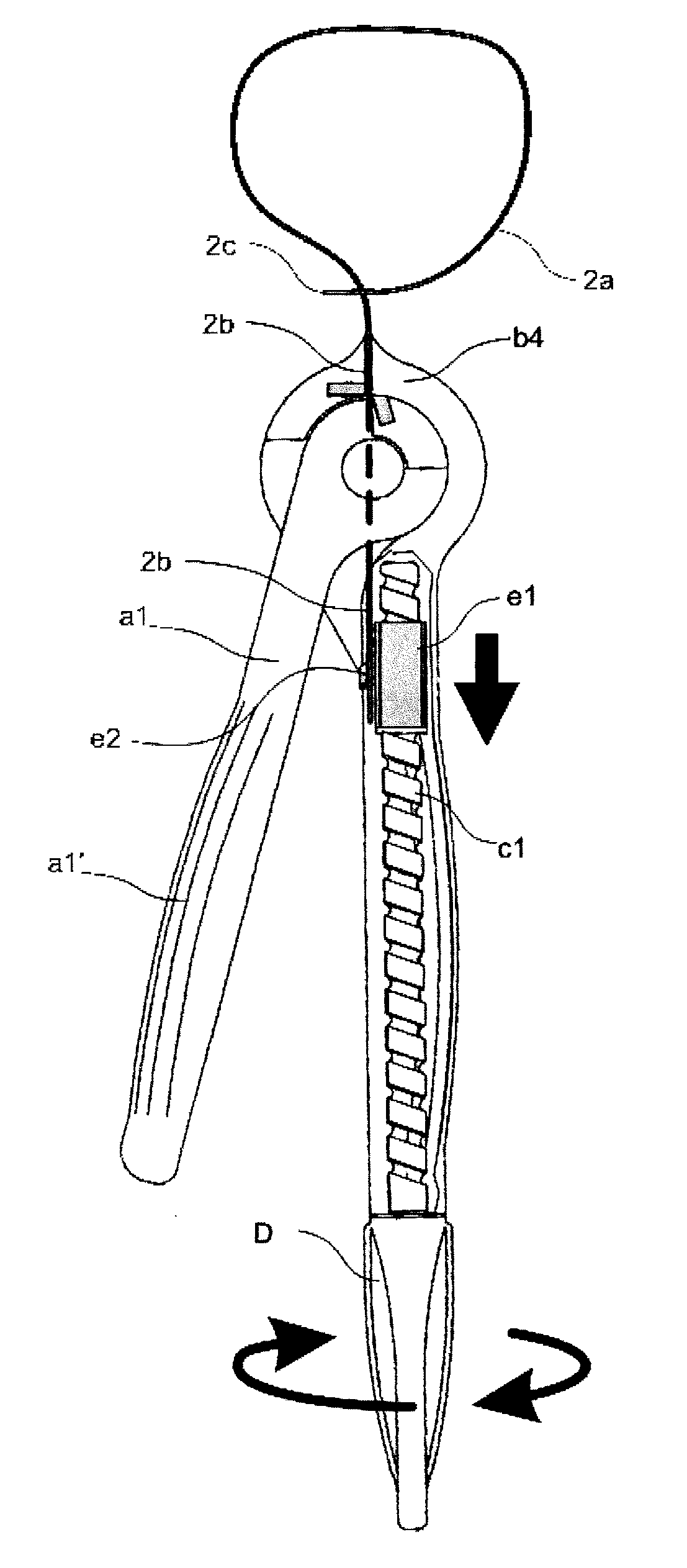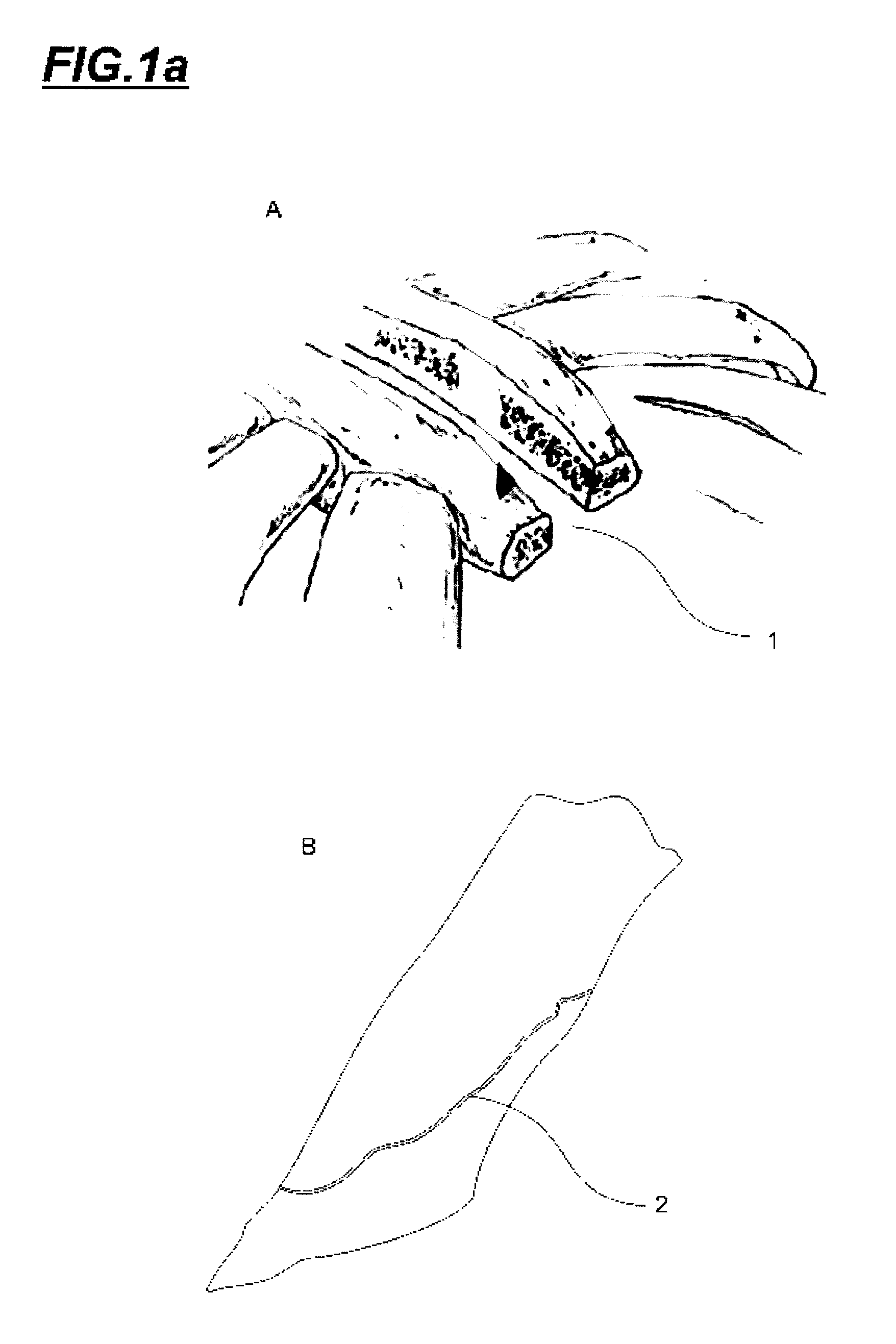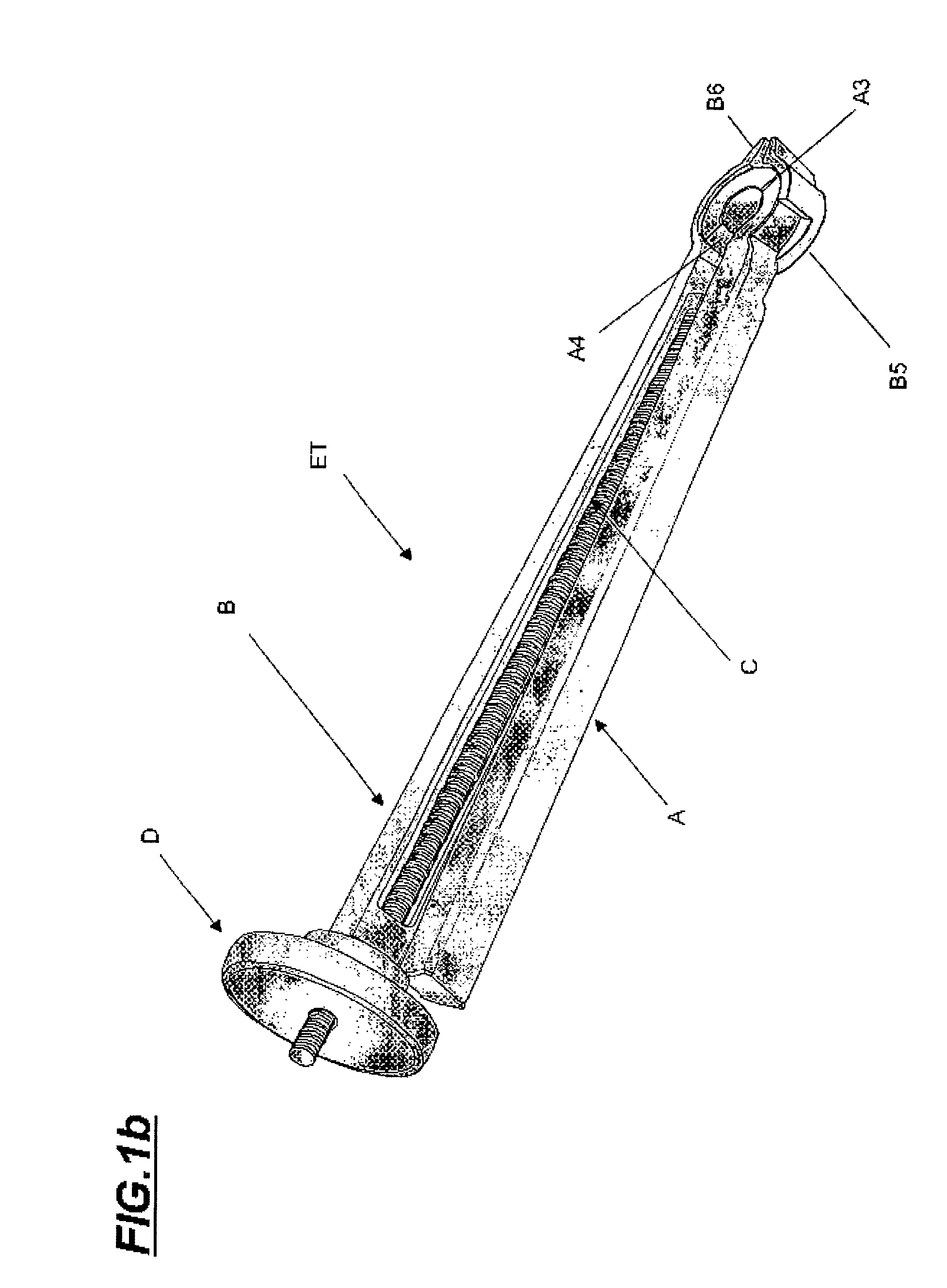Shears with tensioner and dynamometer device
- Summary
- Abstract
- Description
- Claims
- Application Information
AI Technical Summary
Benefits of technology
Problems solved by technology
Method used
Image
Examples
first embodiment
[0107]4a. as depicted in FIGS. 11; 12;
[0108]and 14, the tension indicator (F) is comprised of a display (F1), located at the lower end of the second lever (8), provided with an oblong slit and tension graduation on one side thereof, an indicating point (F4) being defined next to said slit, said point being marked at the lower end of a compressive spring (F2) mounted on the lower housing (F3) defined in the internal end of the second lever (8) that passes through its inner diameter in the spindle (C) which is also delimited by the tensioning handle (D).
[0109]Also, the functional concept can be better understood by the fact that as the instrument nurse rotates the tensioning handle (D) the device for tensioning the metal clamp (2) is actuated in such a way that the whole spindle (C) together with the handle (D) is impelled, thus compressing the compressive spring (F2) so that the indicating point (F4) is displaced along the display (F1) lining up the tension indicating point with the...
PUM
 Login to View More
Login to View More Abstract
Description
Claims
Application Information
 Login to View More
Login to View More - R&D Engineer
- R&D Manager
- IP Professional
- Industry Leading Data Capabilities
- Powerful AI technology
- Patent DNA Extraction
Browse by: Latest US Patents, China's latest patents, Technical Efficacy Thesaurus, Application Domain, Technology Topic, Popular Technical Reports.
© 2024 PatSnap. All rights reserved.Legal|Privacy policy|Modern Slavery Act Transparency Statement|Sitemap|About US| Contact US: help@patsnap.com










